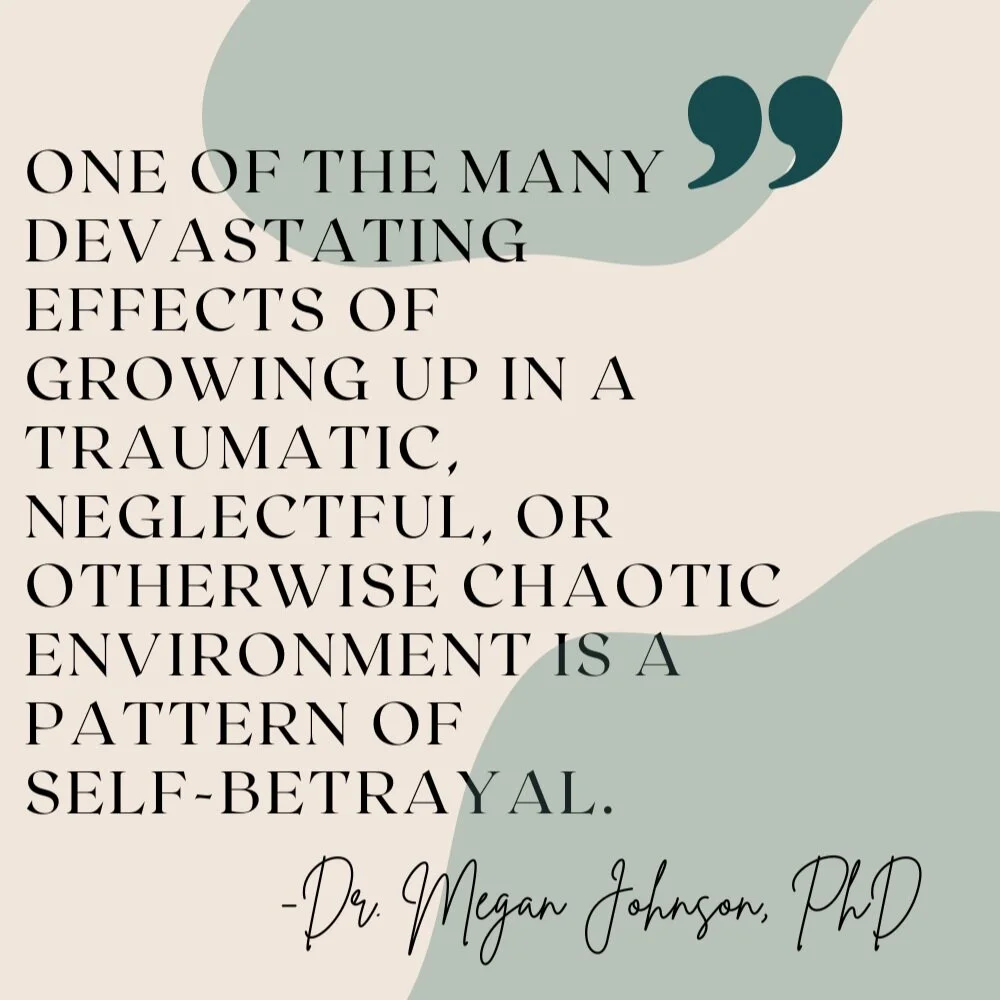How Trauma and Self-Betrayal are Connected
Have you noticed in yourself a tendency to minimize your own needs? To not cause a fuss and keep the peace at all costs? These may be reflections of one of codependency’s main symptoms: self-betrayal. Want to learn more about codependency? You can read more about it here.
Signs you might be in a pattern of self-betrayal include saying “yes” when you want to say “no,” self-sabotaging, ignoring basic needs and self-care, lying to yourself, not taking accountability for your actions, and pretending to be something other than your authentic self. If this sounds like you, read on for an explanation of how self-betrayal emerges and strategies you can implement to combat it.
One of the many devastating effects of growing up in a traumatic, neglectful, or otherwise chaotic environment is a pattern of self-betrayal. Here is how that plays out:
Growing up in an unstable or invalidating environment can threaten one’s attachment to important caregivers and other relational supports. This can send the message that we need to sublimate our emotional needs to ensure our safety and security, particularly when we are young and vulnerable. Those messages then lead to subtle shifts that cause detrimental results.
For example, trauma causes us to view others as unwilling or unable to help us meet our needs. If your caregivers dismiss, ignore, or otherwise don’t make space for your emotional needs, then you don’t learn how to identify those needs and get them met. Similarly, trauma creates in us emotional needs that feel so big, we cannot imagine how our support system could bear to help us. This can create intense emotions, which we tend to interpret to mean there is something wrong in us. But in reality there is something wrong with the situation and your big emotions are simply an indicator of that. Finally, trauma can result from a chaotic environment that teaches you it is not safe to share your needs. If you exist in a space where it is not safe to express your emotional needs, then you will not make room for them. Over time, this can create a deeply ingrained pattern of self-betrayal that is intricately linked to your sense of being ok in this world.
If this resonates with you and you are aware of a pattern of self-betrayal, there are small shifts you can make to combat these patterns.
Advocate for yourself
Instead of putting everyone’s needs before your own, thus fostering resentment, learn what your needs are and how to get those needs met effectively.
Take responsibility for you and ONLY you
Notice those relationships in which you feel like you have to perform. What are you taking ownership of that is not yours? What are you not owning that is yours?
Practice setting boundaries
For many caught up in a pattern of self-betrayal, identifying and asserting boundaries can be challenging. Practice setting boundaries and seek support around processing the anxiety and guilt it might cause you.
Make and keep daily promises to yourself
This can help with rebuilding a sense of trust with yourself. It can be something as simple as waking up at a certain time, actually taking your lunch break, or drinking enough water. Whatever it is, practice setting daily intentions and actually sticking to what you say you will do.
Not sure if you are codependent? Take our quiz to find out:
Okay, so you are codependent and would like some tools to help you process? We have a workbook just for you!
If you need a mental health professional to help you better understand self-betrayal and its impact on relationships, you can sign up for a free 30-minute consultation with our therapist matchmaker. She’ll help connect you to the therapist who’s a perfect fit. (California residents only). We provide online therapy and have therapists who are trained in EMDR therapy. All of our therapists specialize in trauma informed care, and informed trauma therapy.



